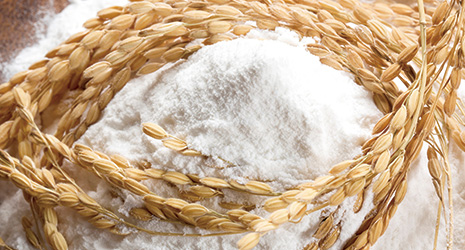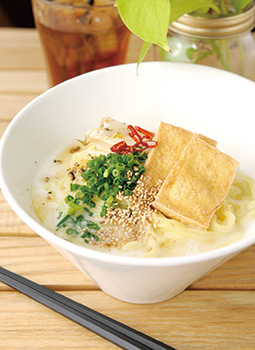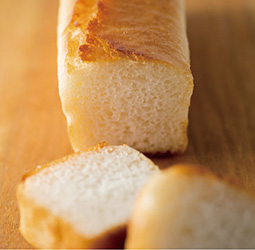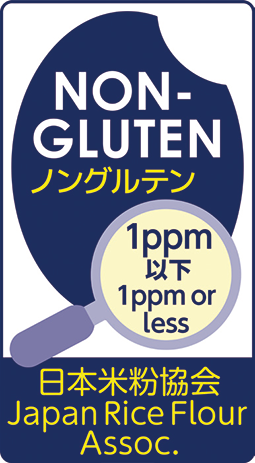Home > Highlighting JAPAN > Highlighting Japan January 2020 > Policy-Related News
Highlighting JAPAN


World’s First “Non-Gluten” Rice Flour
While consumers over the world are enjoying more gluten-free foods, a new product has been released in Japan: “non-gluten” rice flour, which contains virtually no gluten.
It is said that rice cultivation was transmitted to Japan from mainland China about 3,000 years ago. Later, rice farming spread to most parts of Japan around 2,000 years ago, and rice has been the staple food of the Japanese ever since. Rice flour, or powdered rice, has been used mainly as an ingredient in confectionery products for more than 1,000 years.
The number of products using rice flour used to be limited. In the last ten years, however, rice flour has begun to be widely used as an ingredient in daily food products such as bread, cake and noodles. This is due to the development of flour milling machines that are capable of making rice flour with much tinier grains than before. Further, rice varieties that are appropriate for bread and noodles have been developed, which has resulted in the better flavor and texture of foods made from rice flour. These food products are not only marketed in Japan, but are also exported to overseas markets.
One of the most attractive aspects of rice flour is that it does not contain gluten. Gluten is a type of protein found in grains such as wheat and barley. Normally, it is contained not only in food products made from wheat or barley such as pasta, bread, pizza and biscuits, but also in seasoning agents and additives. While gluten increases the elasticity and flexibility of food, which is an advantage, it also causes gluten-related disorders such as wheat allergy, gluten hypersensitivity and celiac disease. These disorders are accompanied by such symptoms as diarrhea, impaired consciousness and headaches. Above all, there are large numbers of people suffering from celiac disease in Western countries. To address this problem, the US Food & Drug Administration (FDA) and the European Commission (EU) have established gluten-free standards. Under these standards, products whose gluten content is less than 20 ppm (20 mg/kg) may be labeled as “gluten-free” products. At present, wheat flour alternatives such as rice flour, corn flour, tapioca flour, almond powder, chickpea powder and corn starch are used for a remarkably diverse range of products, including bread, pizza, biscuits, confectionery and baby food.
Western countries are also seeing growing demand for gluten-free products among health-oriented people other than those with celiac disease, partly because famous athletes and celebrities have adopted a gluten-free diet and extolled its benefits. Some Japanese food manufacturers have also obtained “gluten-free” certification and export products such as rice flour and pasta. Rice flour features low oil absorption, in addition to being gluten-free, which means that fried food using rice flour has a low oil content compared to wheat flour.
Non-Gluten Rice Flour Certification
In response to the growing demand for gluten-free products, Japan began operating the world’s first certification system for “non-gluten” rice flour in June 2018 by using world-leading protein quantification technology. This is aimed mainly at the further dissemination of products that use rice flour with “no gluten” content. Under this certification system, certification bodies grant the “non-gluten rice flour certification” mark to rice flour that (1) uses rice produced in Japan, (2) contains 1 ppm or less gluten — a much stricter criterion than that for “gluten-free” products — and (3) is produced in a factory with stable production and shipping systems. As of December 2019, rice flour from three companies was certified as “non-gluten” rice flour.
The commercialization of rice flour with virtually no gluten content, namely 1 ppm or less, requires an extremely high level of flour milling technology and comprehensive quality control throughout the entire process from the receipt of the raw ingredients to product bagging. To date, this has only been achieved by Japanese food manufacturers. Rice flour with the “non-gluten rice flour certification mark” has begun to be sold not only in Japan but also in other countries. It is expected to make a significant contribution to the health of people all over the world who wish to avoid health problems caused by gluten intake.
© 2009 Cabinet Office, Government of Japan









